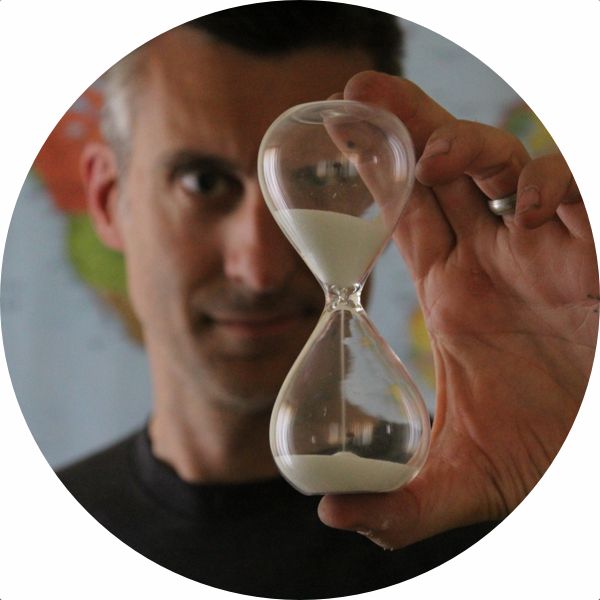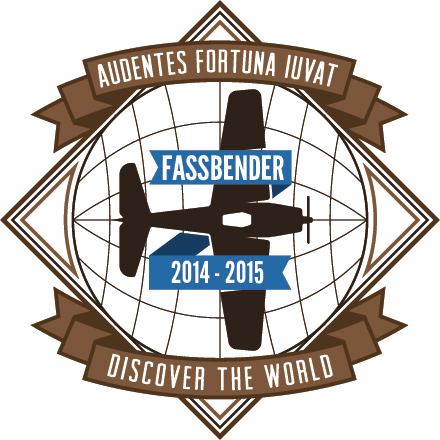Sunday, 03-05-2015. Day 256
Mummies, Mileage, And Torture
On Sunday morning after one last breakfast, we said sad goodbyes to hosts Ashley and Jason at La Tavola Marche, fired up Persephone and headed off for Lucca, a small Italian town located between Florence (Firenze) and Pisa. But before we got too far on the day's journey, we stopped off in Urbania hoping to find the Chiesa dei Morti open. We were in luck — it was.
Chiesa Dei Morti (Church of the Dead)
The church itself was only a small room with a few pews in front of the altar. I’m not sure how widely it’s used in modern times, but today the church is operated by the Confraternity of the Good Death, a group that dates back to 1567 to help and comfort the condemned and those who could not afford funeral services.
Altar at Chiesa dei Morti.
Off to the side a gentleman, presumably a member of the Confraternity, sat behind a small table and sold tickets for €2 that would allow entry to the small room behind the altar where the mummies of Urbania are on display.
Not the mummies you're looking for ... but still spooky.
The mummies have an interesting story ... as you would expect from mummies. In 1804, Napoleon issued the Edict of St. Cloud, which proclaimed that cemeteries could no no longer be located inside city walls for sanitary reasons. And when the bodies of the local cemetery were exhumed, they found 18 of them that had been mummified. So in 1833, a churchyard was built that held niches for these 18 corpses.
Mummies of Urbania
While we were there a large tour group (well, large for the space, maybe eight people plus a guide) was there so we couldn’t get photos of all the mummies together — and they’re behind glass (probably a good thing), so photography was tricky anyway. Still, we managed to capture a few images of them.
Some of the mummies have known identities. The only mummy with clothes is Vincenzo Piccini, a prior (perhaps once of the Confraternity, though this was not totally clear). His wife is known as well, plus there are a few others with names.
There’s also a mummy that had Down's syndrome, one who’d died from a Caesarian section, and a young man who was stabbed at a dance (not sure how that last part is known). They were really creepy, and they reminded us of the draugr from Skyrim.
An Adventure in Buying Fuel
We had to stop and get some diesel for the car. Buying fuel in Italy is tricky. They don’t seem to take credit cards unless you have the right credit card (which we did not). The pumps are all pre-pay, which is fine, but you have to use a little automated attendant that only takes cash (unless you have the right card).
So when we stopped at the small station in Sant’Angelo in Vado, I only had €50 notes in my wallet.
[Small aside: another frustrating thing about traveling in Europe is that many ATMs only dispense €50s, but so many shops don’t (allegedly) have enough change. More than once we’ve had some poor shopkeeper have to dig into their personal funds to give change for our €50 note. To combat this, we started taking out weird amounts from ATMs so we’d get some €20 and €10 notes.]
But, right then, all I had was a €50. So I popped it into the machine and filled up the car to the tune of €40. The machine spit out a little receipt saying I could go inside to get my change. But the kicker is, not much is open on Sunday in rural Italy, and certainly not the petrol station.
And the gents drinking cheap Italian beer at the cafe next door just shrugged, pointed at the locked roll-down metal door and said, “Chiuso.” So I paid €50 for €40 worth of gas. Could be worse, I guess, but it’s not a mistake I made a second time.
Arrival in Lucca
We decided to stay in Lucca because of its proximity to Pisa (and the Leaning Tower) and Florence (and its statue of David) — and because it was a lot cheaper than either of the other two cities. And after three hours of driving across Italy, we arrived.
Lucca is notable for having remarkably intact city walls that date back at least 500 years (a sign on the walls said 1513-2013), and there’s a walkway called the Passegiata della Mura Urbane that follows the walls around the entire city for four kilometers or so that you can walk, run, or bike as you desire.
We arrived on a Sunday, and there were many people walking along the walls and enjoying picnics on the wide swaths of tree-lined green spaces adjacent to the walls.
Walls of Lucca
After walking atop the walls for a little while, we decided to go into the town and see what there was to see. And before too long, we found ourselves standing in front of the Museo della Tortura.
Museo della Tortura
As if seeing 18 mummified corpses wasn’t enough for us in one day, we decided to check out the acclaimed Museo della Tortura, right off one of the main streets inside the walls of Lucca. We got there just in time to make a good circuit of the place before they closed up for the night.
The headsman.
It was a nice counter-point to our mummy visit earlier in the day. This place doesn’t pull any punches when it comes to describing the various tortures that were inflicted upon people in the middle ages, and, as the displays point out, some of these techniques continue today.
Lucca's Churches
Right around the corner from the Museo della Tortura there’s the Basilica of San Frediano, one of Lucca’s many churches. This one is named after (and holds the remains of) Frediano, one of Lucca’s early bishops. We don’t know much more about this place or any of Lucca’s other churches — but the town boasts that there are 99 churches in its city walls.
Basilica of San Frediano
Piazza dell'Anfiteatro
In addition to churches, there’s also the remains of an ancient Roman amphitheater that, over the years, has been converted to a retail space.
Inside the Piazza dell'Anfiteatro
The amphitheater has its roots in the history of the Roman Empire. It was re-purposed in the middle ages as a city square and meeting place, then again, after some renovation, as a marketplace in the 19th century. These days, it’s a commercial center, ringed with cafes, shops, and restaurants.
We strolled through the streets of Lucca until we started to get hungry, so we stopped to get some dinner (And as good as it was, our dinner the night before had been better) and then walked back to the hotel to get some sleep. Driving all day is hard work, and in the morning, we had a road trip to Pisa planned.

Tom Fassbender is a writer of things with a strong adventurous streak. He also drinks coffee.



















